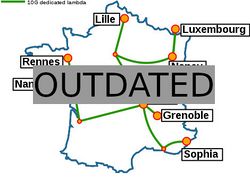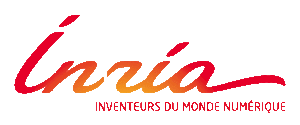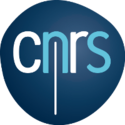Grid5000:Home: Difference between revisions
No edit summary |
No edit summary |
||
| Line 27: | Line 27: | ||
<br> | <br> | ||
{{#status:0|0|0|http://bugzilla.grid5000.fr/status/upcoming.json}} | {{#status:0|0|0|http://bugzilla.grid5000.fr/status/upcoming.json}} | ||
<br> | |||
{{#publications:}} | {{#publications:}} | ||
Revision as of 10:17, 23 March 2018
|
Grid'5000 is a large-scale and versatile testbed for experiment-driven research in all areas of computer science, with a focus on parallel and distributed computing including Cloud, HPC and Big Data. Key features:
|
Five random publications that benefited from Grid'5000 (at least 2929 overall):
- Chih-Kai Huang, Guillaume Pierre. Aggregate Monitoring for Geo-Distributed Kubernetes Cluster Federations. IEEE Transactions on Cloud Computing, 2024, 12 (4), pp.1449-1462. 10.1109/TCC.2024.3482574. hal-04736577 view on HAL pdf
- Alexandre Bonvoisin, Clément Quinton, Romain Rouvoy. Understanding the Performance-Energy Tradeoffs of Object-Relational Mapping Frameworks. SANER'24 - 31th IEEE International Conference on Software Analysis, Evolution and Reengineering, Mar 2024, Rovaniemi, Finland. pp.11. hal-04401643v2 view on HAL pdf
- Anas Mokhtari, Baptiste Jonglez, Thomas Ledoux. Towards Digital Sustainability: Involving Cloud Users as Key Players. IC2E 2024 - 12th IEEE International Conference on Cloud Engineering, Sep 2024, Paphos, Cyprus. pp.126-132, 10.1109/IC2E61754.2024.00021. hal-04633237 view on HAL pdf
- Barbara Gendron, Gaël Guibon. SEC: Context-Aware Metric Learning for Efficient Emotion Recognition in Conversation. Proceedings of the 14th Workshop on Computational Approaches to Subjectivity, Sentiment, & Social Media Analysis (WASSA at ACL 2024), Aug 2024, Bangkok, Thailand. hal-04702997 view on HAL pdf
- Marc Jourdan, Clémence Réda. An Anytime Algorithm for Good Arm Identification. 2024. hal-04688141 view on HAL pdf
Latest news
Failed to load RSS feed from https://www.grid5000.fr/mediawiki/index.php?title=News&action=feed&feed=atom: Error parsing XML for RSS
Grid'5000 sites
Current funding
As from June 2008, Inria is the main contributor to Grid'5000 funding.
INRIA |
CNRS |
UniversitiesUniversité Grenoble Alpes, Grenoble INP |
Regional councilsAquitaine |


